
The Trave is a river in Schleswig-Holstein, Germany. It is approximately 124 kilometres (77 mi) long, running from its source near the village of Gießelrade in Ostholstein to Travemünde, where it flows into the Baltic Sea. It passes through Bad Segeberg, Bad Oldesloe, and Lübeck, where it is linked to the Elbe–Lübeck Canal. It is navigable for sea-going vessels from the Baltic to the Lübeck ports. The Herren Tunnel crosses the Trave, as do numerous bridges, and a ferry connects Travemünde with Priwall. Tributaries of the Trave include the Wakenitz and the Stepenitz.
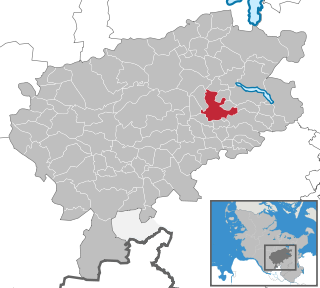
Bad Segeberg is a German town of 16,000 inhabitants, located in the state of Schleswig-Holstein, capital of the district (Kreis) Segeberg. It is situated approximately 50 kilometers (31 mi) northeast of Hamburg, and 25 kilometers (16 mi) west of Lübeck.

Adolf Hitler signed his last will and testament in the Berlin Führerbunker on 29 April 1945, the day before he committed suicide with his wife Eva (nee) Braun.
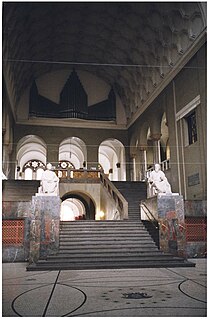
German Bestelmeyer was a German architect, university lecturer, and proponent of Nazi architecture. Most of his work was in South Germany.

Norddeutscher Rundfunk is a public radio and television broadcaster, based in Hamburg. In addition to the city-state of Hamburg, NDR transmits for the German states of Lower Saxony, Mecklenburg-Vorpommern and Schleswig-Holstein. NDR is a member of the ARD consortium.
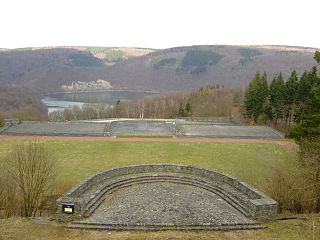
A Thingspiel was a kind of multi-disciplinary outdoor theatre performance which enjoyed brief popularity in pre-war Nazi Germany during the 1930s. A Thingplatz or Thingstätte was a specially-constructed outdoor amphitheatre built for such performances. About 400 were planned, but only about 40 were built between 1933 and 1939.
David Chotjewitz is a German writer and theatre director who lives in Hamburg.
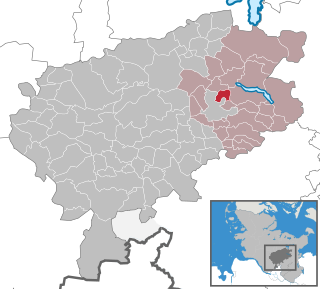
Klein Rönnau is a municipality in the district of Segeberg, in Schleswig-Holstein, Germany. On an Area of 453 acres (1.83 km2) live about 1600 people. There are 3 car workshops, several doctors, supermarkets, and numerous clubs for riding, dog training, and the sportsclub located in Klein Rönnau. Most of the inhabitants are Protestants or non religious.
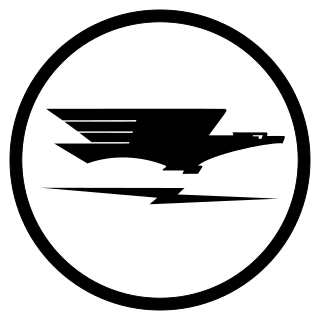
The Reichs-Rundfunk-Gesellschaft (RRG) was a national network of German regional public radio and television broadcasting companies active from 1925 until 1945. RRG's broadcasts were receivable in all parts of the country and were used extensively for Nazi propaganda after 1933.

The Waldbühne is an amphitheatre at Olympiapark Berlin in Berlin, Germany. It was designed by German architect Werner March in emulation of a Greek theatre and built between 1934 and 1936 as the Dietrich-Eckart-Freilichtbühne, a Nazi Thingplatz, and opened in association with the 1936 Summer Olympics. Since World War II it has been used for a variety of events, including boxing matches, film showings and classical and rock concerts. It seats more than 22,000 people. The venue is located off Friedrich-Friesen-Allee just northeast of Glockenturmstraße.

The Rockelmann is a mountain in the Ore Mountains in Saxony, southeastern Germany. It is south-southwest of Schwarzenberg. It formerly had two granite quarries, one of which was converted into an open-air theatre in the 1920s, the other into a Nazi arena (Thingplatz) in the 1930s, and is also the site of a memorial to soldiers killed in World War I; all three are within Rockelmann Park, which was laid out in the 1930s.

The Reich Chamber of Culture (Reichskulturkammer) was a government agency in Nazi Germany. It was established by law on 22 September 1933 in the course of the Gleichschaltung process at the instigation of Reich Minister Joseph Goebbels as a professional organization of all German creative artists. Defying the competing ambitions of the German Labour Front (DAF) under Goebbels' rival Robert Ley, it was meant to gain control over the entire cultural life in Germany creating and promoting Aryan art consistent with Nazi ideals.

The 'Karl May Festival' is a theatre festival in Bad Segeberg, Schleswig-Holstein, Germany. Since 1952, Karl May's adventure novels about the Wild West have been put on stage as part of Karl May Festival in the Kalkberg Stadium at the scenic Segeberger Kalkberg.
Mojca Erdmann is a German soprano who is particularly associated with the operas of Wolfgang Amadeus Mozart.
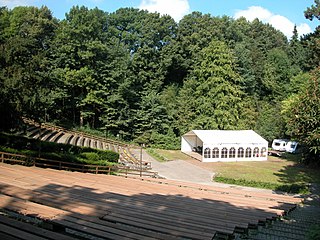
The Freilichtbühne Mülheim an der Ruhr is an open-air amphitheatre in North Rhine-Westphalia, Germany, built in 1936 as a Nazi Thingplatz. It is the most important open-air theatre in the Rhine-Ruhr region and with 20,000 seats, one of the largest in Germany.

The Freilichtbühne Loreley is an amphitheatre located on top of the Lorelei rock in St. Goarshausen, Germany. Designed by Hermann Senf, it was built between 1934 and 1939 as one of the Nazi Thingplätze and is one of the best known of them. It has continued in use since World War II, initially mainly for theatrical performances and since 1976 mainly for rock concerts.
The Brandberge is a protected natural area in Saxony-Anhalt, Germany, in the northwest of Halle. It is part of the Naturpark Unteres Saaletal, a protected landscape area which extends along the River Saale from Halle to Nienburg. In the past it has been used for military exercises and winter sports; during the Nazi era, the first official Thingplatz arena was built there.

The Heidelberg Thingstätte is an open-air theatre on the Heiligenberg in Heidelberg, Baden-Württemberg, Germany. It was built during the Third Reich for performances and events as part of the Thingspiel movement. Until 2018, it was primarily used for unofficial Walpurgis Night celebrations. It is a protected cultural monument.
Rainer Schlösser was a German journalist and writer who held (1933-1945) the governmental post of Reichsdramaturg in the Ministry of Popular Enlightenment and Propaganda headed by Dr. Joseph Goebbels and also President of the Reichstheaterkammer or Reich Theatre Chamber, the state governing body for drama. This was an even more important and high-profile position. The equivalent body in the world of music, the Reichsmusikkammer, was headed by the world-famous composer Richard Strauss from 1933 to 1935.

Alfred-Ingemar Berndt was a German journalist, writer and close collaborator of National Socialist Propaganda Minister Joseph Goebbels. Berndt wrote an eyewitness account of the 1940 German invasion of the Low Countries and France, Tanks Break Through!, and is regarded as propagandistic creator of the "Desert Fox" myth attached to the German Field Marshal Erwin Rommel.

















